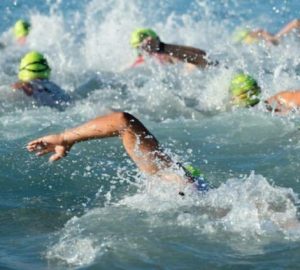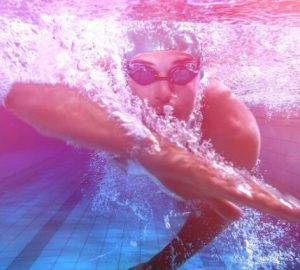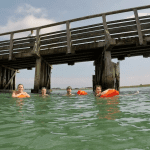
Flexibility matters
A lack of flexibility will almost certainly negatively impact your swimming performance. Tight muscles can cause stiff joints. When a joint is limited in movement the muscles have to work harder to overcome the resistance, and this uses up valuable energy that could be used to either swim faster or swim further.
In addition, good flexibility can improve muscle balance and strength.
Muscles often work in opposition to one another in so-called agonistic pairs. For example, the hamstrings and the quadriceps muscles work in such a pair. As one muscle contracts the other must lengthen to allow for this movement. Therefore if you have tight hamstrings you potentially limit the quadriceps’ full range of movement. This in turn can limit the ability for that muscle to reach its full strength potential. In short, tight muscles inhibit other muscles. If you have tight hip flexors then you are limiting the strength in your glutes, and so on. So flexibility is a must not just for mobility but also for balanced strength.
To maintain or improve your flexibility you need to stretch but many people view stretching as a range of awkward or possibly painful movements and they avoid it. Or they see it as a time consuming chore. In fact, stretching is an absolute treat for your body and it is one of the three most important components of a swimming fitness routine – the others being stamina and strength.
The key to improving your flexibility is in your attitude and approach to stretching. If you begin a stretch in an uncomfortable position and then push your muscles hard to get a stretch you won’t see results. If your body is not enjoying the stretch you will probably be holding your breath, your muscles will sense this and remain strained and inflexible.
Instead, allow your body to open up and relax. Your body then believes all is well and tension begins to ease out of your muscles. Then you need to focus on three things: form, breath and technique. We can see this if we just look at a simple hamstring stretch routine example.
Poor form

There is no point in doing any stretch in an uncomfortable rounded posture. Mark’s seated posture in image 1 is pulling at his lower back and causing a tight, overstretched position that will weaken his back. In a short time his body will tire and ache.
Good form

Mark has bent his knees to take the pressure off his back and is lengthening the muscles to a healthy state. In doing this he is much more comfortable and the lengthened spine is pulling gently on the hamstrings. Without a doubt he will be breathing much better into the stretch. Sitting on a block would also help Mark’s posture and take the pressure off his back.
Breath
Breathe in a way that you feel every breath lifts and lengthens you a little more into your stretch. In most cases the inhalation is the preparation and lift for the stretch and exhalation eases you into the stretch, whilst keeping good form. When your body is relaxed and comfortable every breath will move you deeper into the stretch.
Technique

Good technique combines good form with good breathing. Moving in and out of the stretch whilst maintaining a great posture and constantly breathing into the stretch reassures your body that you are enjoying the stretch. Never go to a point of pain, but to the point of feeling a healthy stretch. The result should be fantastic form, good controlled breathing and a lengthened body as in image 3.







